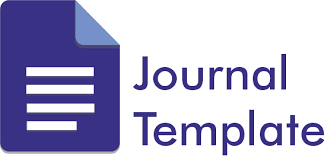THE USE OF CODE SWITCHING BY LECTURERS IN TEACHING PROCESS AT UNIVERSITY OF MUHAMMADIYAH SORONG
DOI:
https://doi.org/10.33506/jq.v5i2.255Keywords:
Code Switching, Lecturers, Teaching ProcessAbstract
Abstract
(The Use of Code Switching by Lecturers in Teaching Process at University of Muhammadiyah Sorong| Code Switching is a process of language which intentionally or unintentionally people talk affected by situation and topic with inserted other language when speaking their language. There were three main problems of this research (1). How often do the lecturers make code switching in the learning process? (2). What are types of code switching that used by lecturers in the learning process? (3). What are the factors cause the lecturers used code switching in the learning process? The method of this research was descriptive gualitative. To gain the data, this research used a recording device, field notes, and a guestionnaire. After analyzing the data, it concluded that all of the lecturers used code switching in the teaching learning process more than 244 occurrences of code switching and more 86.67Yâ€6 responded agree that they often did code switching when teaching. They did code switching based on their material and orally. The writer also found the English codes with added Indonesian prefix and suffix likes dismoothkan, diprint out, utilizingnya, etc. Then, freguently of the codes were Fisheries Faculty 111 of occurrences (45.49â€o) Engineering Faculty 59 (24.180), Law of Faculty 25 (10.25Y9), Sociology Faculty and Administrative Science 25 (10.25Y6) and the remaining 24 occurrences (9.84â€6) are Agriculture Faculty. About 54 statements that shown as situational code switching and nine statements were metaphorical code switching. And ten out 15 factors that the lecturers agree from statements contained in the guestionnaire and five factors were disagreed.
References
Ahmad, B. H. (2009). Teachers†code-switching in classroom instructions for low English proficient learner. English Language Teaching, Vol. 2, No.2, 49-55.
Apriana, A. (2007). Code mixing and code switching in the language of classroom instructions. Universitas Negeri Malang.
Cakrawarti, D. A. (2011). Analysis of code switching and code mixing in the teenlit canting cantig by Dyan Nuranindya. Semarang Diponegoro University.
Emzir. (2008). Metodologi peneltian pendidikan: kuantitatif & kualitatif. Rajawali Pers: PT Raja Grafindo Persada.
Fasold, R. (1984). The sociolinguistics of society: introduction to sociolinguistics volume 1. Britain: Basic Blackwell Ltd.
Gulzar, M. A. (2010). Code-switching: awareness about its utility in bilingual Classrooms. Bulletin of Education and Research, Vol. 32, No. 2: pp. 23-44.
Inesta, E. R. (2006). Human behavior as language: some thoughts on Wittgenstein. Behavior and Philosophy, 34, 109-121.
Karimah, U. (2011). English code switching and code mixing found in advertisements of Kompas in the first week of July edition 2011. Universitas Muria Kudus.
Lewis, M. P. (2009). Ethnologue: languages of the world sixteenth edition. SIL International Online version. Retrieved March, 28 2013 from http://archive.ethnologue.com/16/ print.asp.
Meyerhoff, M. (2006). Introducing sociolinguistics. Routledge: Taylor & Francis e-Library.
Montrul, S. A. Incomplete acguisition in bilingualism: Re-examining the age factor. John Benjamins Publishing Company.
Musyahda, L. (2002). Becoming bilingual: A view towards communicative competence. TEFLIN Journal, 13(1): 12-21.
Potowski, K., Rothman, J. (2011). Bilingual youth, Spanish in English-speaking societies. John Benjamins Publishing Company.
Pradieta, F. (2007). The types and functions of lecturers†code switching in three branches of study of the English Department. Bina Nusantara University.
Sinulingga, E. K. (2009). Code switching and code mixing in “smart business talk†of Smart Radio 101.8 FM in the theme “how to become a superstar sales personâ€. University of Sumatera Utara.
Strauss, A., & Corbin, J. (1990). Basic gualitative research grounded theory: grounded theory procedures and technigues. New Burry Park: Sage Publications.
Wardaugh, R. (2006). An introduction to sociolinguistics fifth edition. Blackwell Publishing Ltd.
Wardaugh, R. (2010). An introduction to sociolinguistics. Malden, MA: Wiley Blackwell.
Downloads
Published
How to Cite
Issue
Section
License
The article copyright is owned by the author and Qalam: Jurnal Ilmu Kependidikan

This work is licensed under a Creative Commons Attribution-ShareAlike 4.0 International License.




